Inowrocław- Kuyavian-Pomeranian 作者: 来源: 发布时间:2021-07-14
Ⅰ. Population and Area
Population (2019)
• Total 72,561 Decrease (51st)
• Density 2,385/km2 (6,180/sq mi)
Area
• Total 30.42 km2 (11.75 sq mi)
Website http://www.inowroclaw.pl
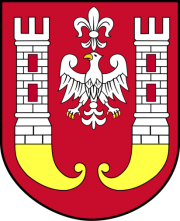
Ⅱ.Natural Geography (environment and resources)
-Inowrocław, city, Kujawsko-Pomorskie województwo (province), north-central Poland, in the Kujawy region.
-Inowrocław is a spa resort and small city in Cuiavian-Pomeranian voievodship, Poland, south to Bydgoszcz and Toruń. It is the major urban centre of historic western Cuiavia.
-Transport
-Nearest airport is located in Bydgoszcz. Other city with an airport and good connections with Inowrocław is Poznań.
-Inowrocław is well connected with many cities in western Poland by train. There is one train per day going to Berlin as well. You can check the timetable here. Major train station is located in the northern part of the city.
-In the city centre there is located main bus station (Dworzec Autobusowy, address: Plac Kasprowicza 5). There are several intercity and international connections available.
-The city is easily accessible by car. From Poznań and Toruń you can come with national route DK 15, from Bydgoszcz and Kalisz with DK 25 and from Włocławek with DK 62.
-The city has well developed bus system provided by MPK Inowrocław. You can verify the routes and timetables here.
-To see all the major attractions, you can just walk. It takes around 20 minutes (or 1.5 km) to get from the railway station to the city centre or spa park. Also, the distance from the Rynek square (central square of the city) to the spa park is simmilar.
-There are taxis available as well, and the taxi stop is just in front of the main railway station.
-After many years of efforts by the authorities and residents of Inowrocław, we can enjoy the full city bypass. In 2017, a 19 km section of the bypass with three road junctions was opened. You can also drive the section connecting Celebrity with the Latkowo junction. The Mayor of Inowrocław, Ryszard Brejza, took part in the opening ceremony.
-The 5 km long route joined the 19 km built section of the ring road and passed the city from the north. As part of the investment, a road junction ("Sławęcinek") was built, as well as five engineering structures, including two over the railway lines. The existing road network was rebuilt, new pavements and bus bays were built.
-I promised to bring the fight for the bypass to the end. The efforts were successful. But this is not the end. A few years ago, I came up with an idea that would connect the dual carriageway bypass with the network of expressways and highways, roads with similar parameters. Improving the communication of Inowrocław with other parts of Poland is another goal - I believe that it will be achieved - says President Ryszard Brejza.
-Let us recall that the funds allocated to the construction of the connector were planned in the budget by the government of Ewa Kopacz. GDDKiA has announced a tender for the construction of a connector for the Inowrocław bypass.After the change of government, the funds secured for this purpose were taken, and therefore the implementation of the investment became impossible. Only after heavy pressure from President Ryszard Brejza and Krzysztof Brejza, MP from Inowrocław, who at the beginning of the year demanded from the government of then Prime Minister Beata Szydło, to increase the amount planned for the investment by the missing PLN 5 million, the tender was settled. In October 2017, the construction of the bypass connector began.
-Change in traffic organization at the Latkowo junction from September 3, 2019.
-The General Contractor for the construction of the Inowrocław bypass (connector) informs that in connection with the planned in the fourth quarter of this year. completion of works on the main bypass route on September 3 this year. there will be a change in traffic organization at the Latkowo junction.
-Due to the introduced change, all vehicles coming from Strzelno will be forced to exit at the Latkowo junction via one slip road, which will carry traffic towards Toruń, Inowrocław and Bydgoszcz. At this point, the Contractor points out that after leaving the beltway, drivers who will travel towards Inowrocław / Bydgoszcz will reach the intersection of national road No. 25 (Toruń - Inowrocław implementation), where the left-turn to Inowrocław constitutes a collision relationship (the intersection with the need to give way).
-Considering the introduced change in traffic organization at the junction in Latkowo, the Contractor appeals to drivers traveling from Strzelno towards Inowrocław / Bydgoszcz to use the earlier exits from the bypass (Tupadły junction connected with provincial road 412 or Jacewo junction connected with provincial road 252) until the opening of stage 2 of the bypass for use.
-Changes in traffic organization in Sławęcinek from August 26, 2019.
-From Monday - August 26, 2019, there will be changes to the traffic organization on national road No. 25. In Sławęcinek, the existing national road will be closed for a section of approx. 500 meters and the traffic will be transferred to the junction of the future city bypass.
-During the works on the road No. 25, only access to the property will be allowed.
-Due to numerous narrowing of the road, changes in the direction of traffic and road traffic on temporary surfaces, and with safety in mind - a speed limit of 50 and 40m / h will be introduced throughout the entire section of the works.
-The changes will last until the opening of the entire section of the city bypass under construction, ie until autumn this year.
-Recently, rapidly progressing works related to the construction of the bypass connector can be observed, especially on the route to Bydgoszcz. The end of this investment is fast approaching, which the people of Inowrocław are waiting for.
-Almost 5 km, the route will connect to the constructed section of the bypass and will bypass Inowrocław from the north. From the beginning of July, road workers at the Sławęcinek road junction strengthened the sewage outlets with a stone rip-rap, made earthworks and slopes, strengthened the Smyrnia canal, and installed curbs and cornice boards on bridge structures.
-Currently, the first works are carried out on the surface of the existing national road No. 25 (the section from the bypass under construction to the viaduct at Dworcowa Street). So far, the existing surface has been milled. Today, drivers can expect road narrowing and speed restrictions, which can sometimes lead to traffic jams. In this section the traffic is controlled by signalers. These works are aimed at improving the condition of the existing pavement on the national road No. 25, which is an access road to the city bypass connector under construction.
-At the request of President Ryszard Brejza on this matter, progress in the construction of the so-called of the bypass connector, the investor of GDDKiA in Bydgoszcz replied that the works were carried out according to the schedule and there were no delays.
-According to the General Directorate for National Roads and Motorways, works related to the replacement of soil, removal of stumps, construction of access roads and culverts are currently underway. Additionally, works are carried out in the energy and water and sewage sectors.
-We remind you that the almost 5 km long route will connect to the 19 km long section of the ring road and will bypass the city from the north. The investment involves the construction of a road junction ("Sławęcinek"), five engineering structures, including two over the railway lines, as well as the reconstruction of the existing road network, the construction of sidewalks and bus bays.
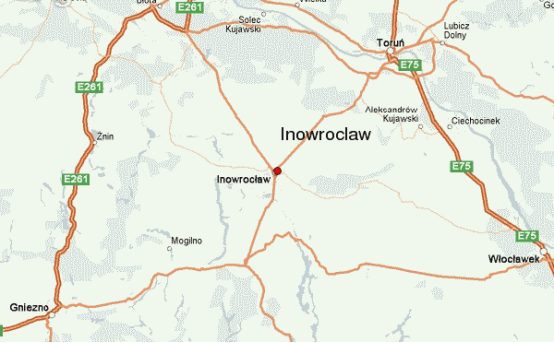
Ⅲ.Economy
-Inowrocław Economic Area
-In response to the growing requirements of potential investors, the City of Inowrocław has prepared approx. 35 ha of land comprehensively prepared for investments, with access roads, pavements, parking bays and infrastructure necessary to start the investment process. The project called "Inowrocławski Commercial Area" was implemented in 2007-2012 and included, apart from design and construction works, works related to changes in local spatial development plans, so as to enable the formation and development of companies from many industries. The city obtained EU funds for the implementation of the project in the amount of PLN 9,056,907.51, which constituted 60% of eligible costs.
-The areas of the Inowrocław Economic Area (IOG) are located in various parts of the city and have been divided into zones:
-The Northern Zone is located in the vicinity of Metalowców street, Marcinkowskiego street, Libelta street and Szosa Bydgoska, about 25 ha of land. The Local Spatial Development Plan allows for the construction of production facilities, warehouses, warehouses, service buildings, commercial facilities with a sales area of over 2000 m2 and technical infrastructure devices, and also allows for the location of parking lots and the arrangement of green areas with small architecture facilities. From the side of ul. Marcinkowskiego, entrance to the zone via Towarowa Street, and from ul. Bydgoszcz Szosa, Równinna street
-The Western Zone is an investment area located in the area of Pakoska Street, between the Inowrocław-Poznań track and the areas of SOLINO SA, with an area of about 8 ha. This area is the laureate of the 3rd edition of the national competition "Golden sites". The Local Spatial Development Plan provides for industrial and service activities with the necessary infrastructure there. As part of the project, a sewage network with a sewage pumping station, a water supply network and a gravity rainwater drainage system were built. The entrance to the zone via the newly built Krucza Street.
-The Southern Zone is an investment area with an area of about 4 ha located in the area of Deszczowa and Bagienna streets. It is an area intended for industrial, service and craft activities as well as wholesale trade depots with the necessary infrastructure and administrative and social facilities. There was already a sanitary sewage system in the investment area, and there was no need to build an access road. A rainwater drainage system and a water supply network with fire hydrants were built.
-In addition, the City of Inowrocław also offers investment areas located in the Brine Park as a Brine Investment Area - in accordance with the provisions of the Local Spatial Development Plan, this is an area intended for services related to the activities of a health resort, culture, entertainment and commercial services indicated in the health resort statute, catering facilities, guesthouse and sanatorium and administrative facilities with the necessary infrastructure.
-Plots in the area of the IOG and SOI are sold by way of a written open tender, they can also be leased. The current geodetic division is only an indicative division, it is possible to separate a plot of land in place and with an area corresponding to the investor's needs.
-Inowrocław Economic Area - Invest Inowrocław http://www.inwestuj.inowroclaw.pl/115/inowroclawski-obszar-gospodarczy-2
Ⅳ.Industrial Characteristics
-Inowrocław is one of the largest cities in the Kuyavian-Pomeranian Voivodeship and thus one of the most important economic centers in the region. The city in central Poland is situated at the intersection of the main trade and communication routes (road and rail), on the shortest route from Greater Poland to Masuria, in close proximity to the A1 and A2 motorways.
-The strong position of Inowrocław is shaped by thriving enterprises from the food, energy, machinery, transport, mining, chemical, printing and plastics industries, as well as developing services and trade. Among the leaders of companies from the region, there are many well-known and significant enterprises on the domestic and foreign market, including: ALSTAL Grupa Budowlana - one of the largest construction companies in Poland, Inowrocławskie Kopalnie Soli, Solino "SA - a leading producer of salt and brine, CIECH SODA Polska - a leader in the soda ash market and a significant player in the Central European chemicals sector, CRONIMET - a leader on the steel scrap market, INTER METAL - a producer of complete steel elements, road barriers also used outside our country. The confectionery industry is represented, among others, by Zakład Produkcji Cukierniczej "Barbara Luijckx", whose offer is addressed to the confectionery and bakery market and the industrial market that uses chocolate additives in the production process, or the company INPOL Gronikowscy Sp. J. - sweets maker. A valued producer is also the District Dairy Cooperative "Cuiavia". Moreover, on a national scale, Inowrocław is called the printing industry, represented by numerous and well-known plants, such as: Pozkal Sp. z o. o., Sp. k. Druk-Intro SA, Polprint Sp. z o. o. Drukarnia Ekspers, TOTEM Sp. z o. o., KUNKE Poligrafia Sp. z o. o. The concentration of printing industry companies in the region contributed to the creation of the printing infocluster. The initiatives are all the more valuable, as the industries represented by clusters,
-The spa function of the city is developing as dynamically as industry. In addition to the largest entity in the industry - "Solanki" Uzdrowisko Inowrocław Sp. Z oo, there are many other sanatoriums, such as Centrum Uzdrowiskowe ENERGETYK Sp. Z oo, Sanatorium Uzdrowiskowe "OAZA" Sp. Z oo, Sanatorium Uzdrowiskowe "Modrzew", Sanatorium Uzdrowiskowe " Przy Tężnia. ”It should also be added that numerous investments in the Brine Park, revitalized areas and a newly adapted area have translated into the development of infrastructure in the city and the creation of numerous SPA centers, hotels and guesthouses.
- Why is it worth investing http://www.inwestuj.inowroclaw.pl/46/inowroclaw-miasto-2
-Key projects
-1. The 2030+ acceleration strategy - this applies to all of us
-Official consultations of the voivodeship development strategy until 2030 are starting. On July 28, Toruń hosted an inaugural conference with the participation of local government officials from the entire region, parliamentarians, representatives of government administration and representatives of scientific, business and environmental protection circles. The new version of our most important programming document, which will include the basis for the development of the regional operational program of the new perspective should be adopted by the regional council later this year.
- The 2030+ acceleration strategy - this applies to all of us https://www.kujawsko-pomorskie.pl/biuro-prasowe/informacje-prasowe/36080-strategia-przyspieszenia-2030-to-dotyczy-kazdego-z-nas
-2. The Industrial Robot Programming Center in Gdańsk invites you to cooperate
-The Industrial Robot Programming Center (CPRP) on the Ostrów Island in Gdańsk was established by the Pomeranian Special Economic Zone in cooperation with the Institute of Fluid-Flow Machinery of the Polish Academy of Sciences. This action is a response to the market needs in the reality of Industry 4.0. The Industrial Robot Programming Center is one of the first such centers in Poland, which enables the improvement of employees' competences and helps students of industry schools in choosing a career path related to automation and robotics. The center also offers classes in 3D printing, which is another part of the industry of the future. The establishment of CPRP is also an element of the post-shipyard area revitalization project.
-Centrum Programowania Robotów Przemysłowych w Gdańsku zaprasza do współpracy - Inwestuj Inowrocław http://www.inwestuj.inowroclaw.pl/487/centrum-programowania-robotow-przemyslowych-w-gdansku-zaprasza-do-wspolpracy
Ⅴ.Attrations and Cityscape
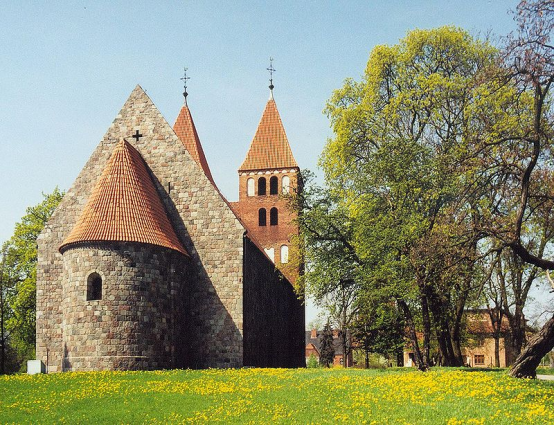
Romanesque Holy Name of Mary church (minor basilica)
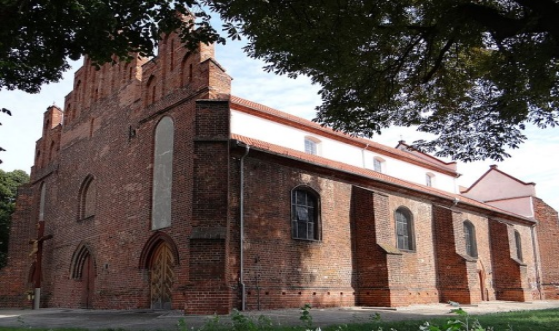
Gothic Saint Nicholas church
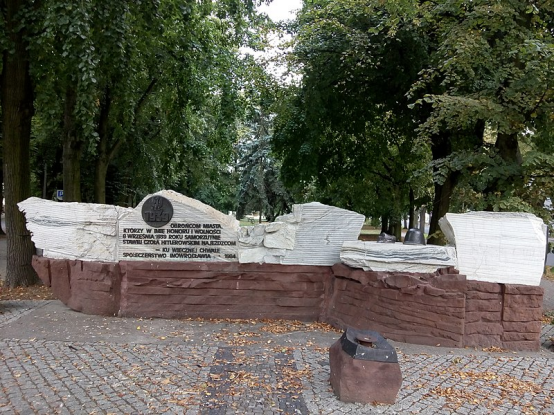
Monument to the Polish defenders of Inowrocław
-Inowrocław is described as a “city on salt”, due to its unique location on salt deposits, whose curative power has been used for many years. An exceptional local microclimate is conducive to treatment of hypertension, upper respiratory diseases, thyroid, and skin allergies. It is also used in early cardiac rehabilitation.
-The spa part of the town is created by the Saline Park situated on over 85 hectares. It features a graduation tower, the main facility of the spa, which was opened in 2001. It is the second largest in Poland, just after the one in Ciechocinek. Brine is conveyed via pumps to the highest level of the graduation tower (9 m); then it flows down through blackthorn branches, contributing to the development of saline aerosol in the surroundings of the graduation tower.
-During the interwar period, Inowrocław was called the “gem of spas”. It attracted health resort visitors from both home and abroad. Some of the spa amenities located in the park include the pump room, offering waters extracted in Inowrocław, mineral “Inowrocławianka” water and curative water called “Jadwiga”; the Palm House and the Kuyavian cottage with many species of exotic plants, beautiful fragrant gardens, papal gardens, a sandy beach, tennis courts, outdoor fitness centre, a site for BBQ gatherings, and trails that attract throngs of runners, rollerbladers and bikers.
-The most prominent historic landmark of Inowrocław is the Basilica Minor of the Most Holy Name of Mary, built at the turn of the 13th century (9 Bpa. A. Laubitza Street). The exterior walls of the basilica, on its northern side, feature bas-reliefs of devils, animals and people, symbolizing the basic truths of Christian faith, according to which, legends were supposed to protect the faithful against evil powers.
-We also recommend visiting the Jan Kasprowicz Museum (33 Solankowa Street), where we can trace back the history of salt mining in Inowrocław. Other attractions include a thermal spring (with chloride-sodium water extracted at a depth of 491 m) and SPA facilities (Harmonia SPA, 107 Świętokrzyska Street, Medical SPA, 23 Wilkońskiego Street, and Anielska Grota in the Bast Hotel, 35/37 Królowej Jadwigi Street).
Ⅵ.History and Culture
-The town was first mentioned in 1185 as Novo Wladislaw, possibly in honor of Władysław I Herman or after the settlers from Włocławek. Many inhabitants of Włocławek settled in Inowrocław fleeing flooding. In 1236, the settlement was renamed Juveni Wladislawia. It was incorporated two years later by Casimir Konradowic. In medieval Latin records, the town was recorded as Juniwladislavia. As a result of the fragmentation of Poland into smaller duchies, after 1230 Inowrocław was the capital of the Duchy of Kuyavia, and from 1267 to 1364 it was the capital of the Duchy of Inowrocław, before it became part and capital of Poland's Inowrocław Voivodeship, which covered northern Kuyavia along with the Dobrzyń Land. The voivodeship later also formed part of the larger Greater Poland Province of the Polish Crown. Inowrocław was a royal city of the Polish Crown. The town's development was aided by the discovery of extensive salt deposits in the vicinity during the 15th century.
-It was an important city of late medieval Poland. In 1321, a Polish-Teutonic trial was held in Inowrocław regarding the Teutonic occupation of Gdańsk Pomerania, while the city itself was occupied by the Teutonic Knights from 1332 to 1337. King Casimir III the Great often stayed in the city, and in 1337 he held a meeting with King John of Bohemia in the local castle.A strong garrison was located in the city during the Polish-Teutonic War (1409-1411), and it was the main base of King Władysław II Jagiełło after his victory in the Battle of Grunwald.
-Inowrocław was occupied and plundered by Swedish troops during the Deluge in the 1650s, and was annexed to the Kingdom of Prussia in February 1772 during the First Partition of Poland and added to the Netze District. Following the Franco-Prussian Treaty in July 1807, Inowrocław was transferred to the newly created Duchy of Warsaw, which was a client state of the French Empire. The city was a headquarters for Napoleon Bonaparte during his 1812 invasion of Russia. Following the Congress of Vienna in 1815, Inowrocław (as first Inowraclaw and later Inowrazlaw) was transferred back to Prussia as part of the Grand Duchy of Posen. Initially, until 1838 the mayors were still Poles, then Germans. Despite Germanisation attempts, the city was an important center of the Polish resistance during the partitions. It flourished after the establishment of a railway junction in 1872 and a spa in 1875. The city and the region were given the Germanized name Hohensalza on December 5, 1904. It was electrified in 1908.
-Interbellum
-After the end of World War I, in November 1918, Poland regained independence and Polish insurgents re-captured the city in January 1919. Restoration to the re-established sovereign Polish state was confirmed in the Treaty of Versailles (which came into effect on January 10, 1920), and the historic name Inowrocław was restored. High unemployment resulting from trade embargoes led to violent confrontations between workers and the police in 1926 and hunger strikes killed 20 in 1930. Inowrocław was part of Poznań Voivodeship until 1925, when it became an independent urban district. This district was briefly assigned to Great Pomerania during the reform of Polish regional administration just before World War II.
-World War II
-Monument to the Polish defenders of Inowrocław
-Captured by the German 4th Army during the invasion of Poland on September 11, 1939, Inowrocław was again renamed Hohensalza and initially administered under the military district (Militärbezirk) of Posen before being incorporated into Nazi Germany first as part of the Reichsgau of Posen (1939) and then as part of Reichsgau Wartheland (1939–1945).
-The Einsatzgruppe IV entered the city on September 12-15, 1939, to commit various atrocities against Poles. Poles arrested during the Intelligenzaktion were held in the local prison and in a transit camp, and afterwards mostly murdered in the prison or in the nearby Gniewkowo forest, while some were deported to Nazi concentration camps.In a large massacre, on the night of October 22-23, 1939, the Germans murdered 56 Poles in the prison, including numerous teachers. Families of the victims were expelled, alike local Polish activists and craftsmen, whose workshops were handed over to German colonists in accordance to the Nazi Lebensraum policy. In total, the Germans expelled a few thousand Poles from the city, including over 2,900 already in 1939. Between 1940 and 1945, Hohensalza was used as a resettlement camp for Poles and an internment camp for Soviet, French, and British POWs.
-Recent period
-Inowrocław returned to Poland and its original name following the arrival of the Soviet Red Army on January 21, 1945. The last German air raid occurred on April 4, 1945, when a single aircraft dropped four fragmentation bombs and fired on travelers waiting at the Inowrocław train platform. Between 1950 and 1998, the town was part of Bydgoszcz Voivodeship, but the 1999 reforms left it part of Kuyavian-Pomeranian Voivodeship.
Ⅶ.Other Information
-Inowrocław is a city in north-central Poland with a total population of 72,561 in December 2019 (72,786, June 30, 2019). It is situated in the Kuyavian-Pomeranian Voivodeship since 1999, previously in the Bydgoszcz Voivodeship (1975–1998). It is one of the largest and historically most significant cities within Kuyavia.
-Inowrocław is an industrial town located about 40 kilometres (25 miles) southeast of Bydgoszcz known for its saltwater baths and salt mines. The town is the 5th largest agglomeration in its voivodeship, and is a major railway junction, where the west-east line (Poznań–Toruń) crosses the Polish Coal Trunk-Line from Chorzów to Gdynia.
Ⅷ.Contact Information
INOWROCŁAW CITY HALL
Mayor Ryszard Brejza
Aleja Ratuszowa 3688-100 Inowrocław
Tel. Headquarters: +48 52 355 53 00
Fax: 52 355 52 55
E-mail: uwad@inowroclaw.pl
